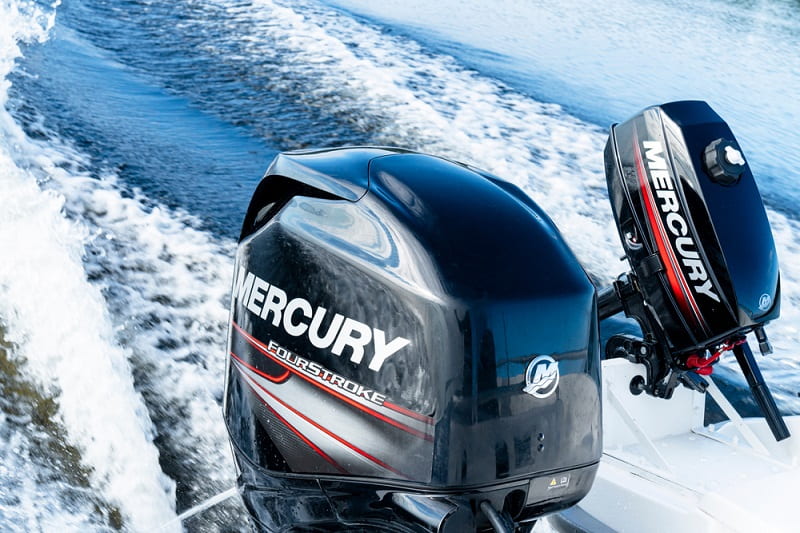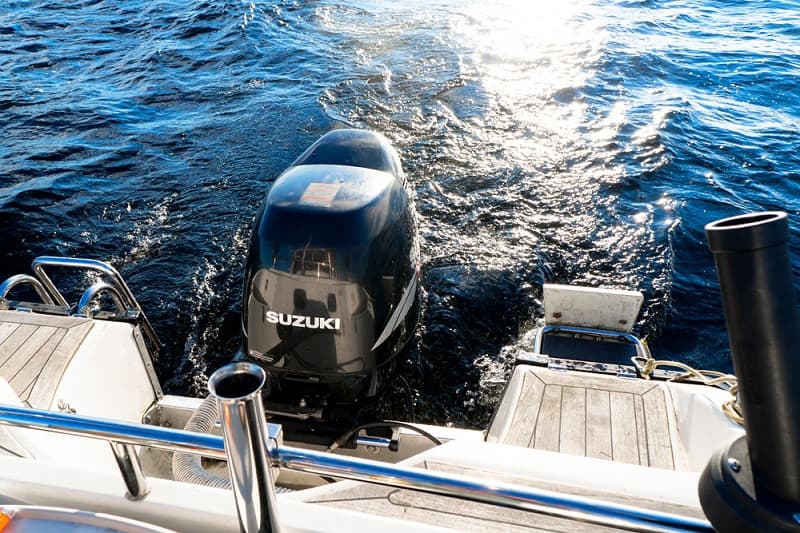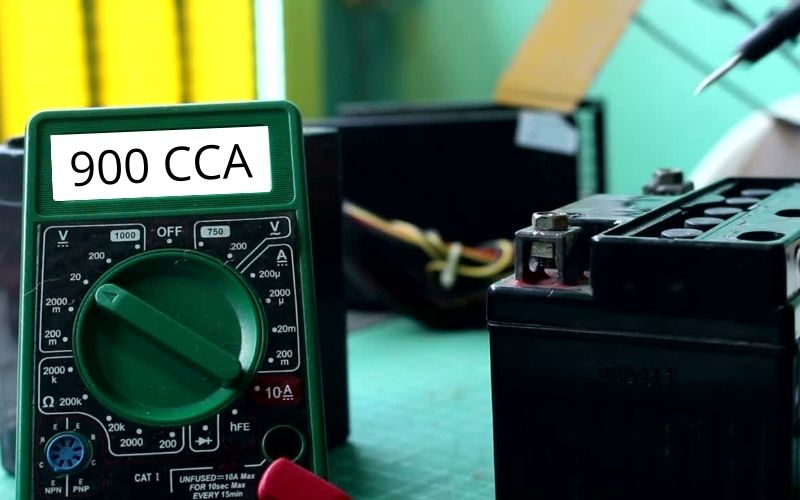Your outboard motor needs a new battery.
You’re looking at all the different options available and you begin to realize: choosing a battery isn’t as simple as you thought. There are so many different types and sizes, but which one will work best for your motor?
It’s important to choose a battery with enough cold cranking amps (CCA) to get your motor running efficiently every time. But how many cold cranking amps do you need?
How many amps are required to start an outboard motor?
Keep reading as we answer this and other related questions!
Table of Contents
How Many Cold Cranking Amps Does an Outboard Motor Need?

There is no quick answer to this question, and what applies to one motor may not apply to another. Simply put, it depends on the type and size of your motor.
Not only that, different brands may have different requirements, as well. Even different sizes of motors made by the same brand may have different amp requirements.
When it comes to cold cranking amps, it’s best to choose a battery that will provide the recommended number for your specific motor.
As a general rule of thumb, larger motors will require more cold cranking amps to get started.
The following figures were found on a forum and provide no source material; with this in mind, they shouldn’t be completely relied upon.
These numbers only serve as a general guideline for what your motor might need; for more specific information, check your owner’s manual.
- Small outboard motors (9.9-30 HP): 350 CCA battery
- Medium outboard motors (40-140 HP): 360 CCA battery
- Large outboard motors (150-300 HP): 500 CCA battery
Again, this information is very generalized, but it does demonstrate that, the greater the horsepower of the engine, the larger the battery you’ll need.
Now let’s take a closer look at specific brands. These figures come from this same forum mentioned above so they should be taken with a grain of salt.
However, they do serve as good examples of what you might expect to need for different outboard motors.
Yamaha

- 2-Stroke 50 HP and below: 245-323 CCA battery
- 2-Stroke 60-150 HP (Carbureted): 380-502 CCA battery
- 2-Stroke, 2.6L, 150-200 HP (EFI): 380-502 CCA battery
- 2-Stroke, 3.1L, 200-250 HP (EFI): 512- 675 CCA battery
- 2-Stroke 150-300 HP (HPDI): 512-675 CCA battery
- 4-Stroke F25 and below: 245-323 CCA battery
- 4-Stroke F30-F115: 380-502 CCA battery
- 4-Stroke F150-F250: 512-675 CCA battery
- 4-Stroke F350: 750-950 CCA battery
Mercury

- 2-Stroke 6-15, 20/25, 30/40, 40/50 & 60 HP: 350-465 CCA battery
- 2-Stroke 75 – 125 HP: 450-525 CCA battery
- 4-Stroke 9.9/15 & 25 HP: 350-465 CCA battery
- 4-Stroke 30/40, 45/50 HP: 350-465 CCA battery
- 4-Stroke 30/40, 45/50 HP (very cold temperatures): 750-1000 CCA battery
- 4-Stroke 75/90: 350-465 CCA battery
- 4-Stroke 75/90 (Very cold temperatures): 750 -1000 CCA battery
- V-6 Carb (EFI) 135/200 & 200/250 HP: 490-630 CCA battery
- OptiMax 2.5L/3.0L: 750-1000 CCA battery
- Verado 135-200 HP: 800-1000 CCA battery
- Verado 200-300 HP: 800-1000 CCA battery
Suzuki

- 4-Stroke 25 HP and below: 330-450 CCA battery
- 4-Stroke 40-140 HP: 512-650 CCA battery
- 4-Stroke 150-250 HP: 670-850 CCA battery
- 4-Stroke 300 HP: 800-1000 CCA battery
Evinrude

- Outboard 25-90 HP: 640-800 CCA battery
- Outboard 25-90 HP (very cold temperatures): 800-1000 CCA battery
- Outboard 115-250 HP: 675-845 CCA battery
- Outboard 115-250 HP (very cold temperatures): 800-1000 CCA battery
Can I Use a Deep Cycle Battery to Start My Outboard Motor?

The short answer is yes, you can start your outboard with a deep cycle battery. But there are some things to consider.
Normally, you would start your outboard motor with a starting battery. Deep cycle batteries are not made like starting batteries, which produce a quick burst of high output; deep cycle batteries generally produce much lower output over longer periods of time.
You can use a deep cycle battery to start your engine if you have to, as long as the battery has enough cold cranking amps to get the motor running.
That said, you should only do this when you have to: if your starting battery dies while you’re out on the water, for example. You should not use a deep cycle battery as a long-term replacement for a starting battery.
Repeatedly using a deep cycle battery to start an outboard motor will lessen the life of the battery and may damage it over time.
Is It Okay To Have a More Powerful Battery Than You Need?
Yes. The number of cold cranking amps listed in your owner’s manual is actually the minimum amount you need to start the motor.
For example, if your outboard motor requires 600 cold cranking amps to start, then you need to have a battery rated for at least 600 CCA of output. If your battery is rated for 900 cold cranking amps, this will not hurt your motor.

Having extra battery capacity is better than not having enough.
Be careful not to confuse the cold cranking amps with the voltage, which should not be more than what is listed in your owner’s manual.
In other words, if your outboard motor requires a 12V battery, don’t use a 24V battery. If the motor requires a 24V battery, use one 24V or two 12V batteries.
But in terms of cold cranking amps, it is okay to have a more powerful battery than you need; in fact, because of the extra capacity, the battery may not discharge as quickly as a smaller battery would.
How Do You Check Amp Draw on a Starter?
Perhaps you’re wondering how many amps your outboard actually uses when you start it up.
You can test this by performing an amp draw test. You will need to use an amp meter or multimeter to perform this test.

Locate the starter on your outboard motor; if you can’t find it on your own, check with your owner’s manual.
Clamp the amp meter onto the negative power cord coming from the starter, then start your engine. Make note of the amperage that appears on the amp meter’s readout.
For a helpful visual of how to perform an amp draw test, check out the following video:
Conclusion
Outboard motors have different amp requirements depending on their size, brand, and even the weather conditions (more amps are required to start the engine in colder temperatures).
Find out the requirements of your specific motor by checking your owner’s manual.

Sarah Hood has been writing for Anchor Travel since 2021. When she’s not writing, she enjoys cooking, singing, and spending time in the great outdoors.

